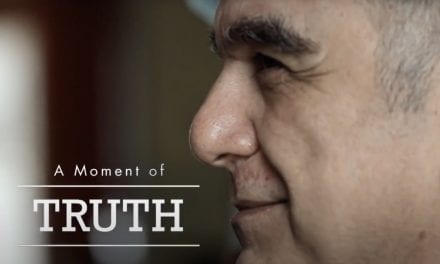“Your aspirations are your possibilities” – Samuel Johnson – One of the most famous aspirational goals of all times was articulated in J.F. Kennedy’s ‘putting a man on the moon’ speech. Kennedy masterfully captured the imagination and energized a nation with the words:
“We choose to go to the moon. We choose to go to the moon in this decade and do the other things, not because they are easy, but because they are hard, because that goal will serve to organize and measure the best of our energies and skills, because that challenge is one that we are willing to accept, one we are unwilling to postpone, and one which we intend to win, and the others, too.”
Our culture is obsessed with happiness, but what if there’s a more fulfilling path? Happiness comes and goes, says writer Emily Esfahani Smith, but having meaning in life — serving something beyond yourself and developing the best within you — gives you something to hold onto. Learn more about the difference between being happy and having meaning as Smith offers four pillars of a meaningful life.
***
What keeps us happy and healthy as we go through life? If you think it’s fame and money, you’re not alone – but, according to psychiatrist Robert Waldinger, you’re mistaken. As the director of a 75-year-old study on adult development, Waldinger has unprecedented access to data on true happiness and satisfaction. In this talk, he shares three important lessons learned from the study as well as some practical, old-as-the-hills wisdom on how to build a fulfilling, long life.
***
Tim Kasser – Aspiration Index (article)
The primary focus of much of my research has distinguished between two types of goals. Extrinsic, materialistic goals (e.g., financial success, image, popularity) are those focused on attaining rewards and praise and are usually means to some other end. Intrinsic goals (e.g., personal growth, affiliation, community feeling) are, in contrast, more focused on pursuits that are supportive of intrinsic need satisfaction.
The Aspiration Index is my preferred way of assessing the constructs I typically study, as it is quite flexible, allows assessment of various goals on various dimensions, and, most importantly, allows for the assessment of the relative centrality of particular goals within an individual’s personal goal system. Briefly, the AI presents individuals with a variety of possible goals they may have for the future and asks them to rate them on different kinds of dimensions. Versions of the AI have proliferated, as it is a fairly flexible instrument that has undergone substantial revision over the years.
***
From Dictatorship to Democracy – Gene Shap: Nonviolent action in conflicts throughout the world.








